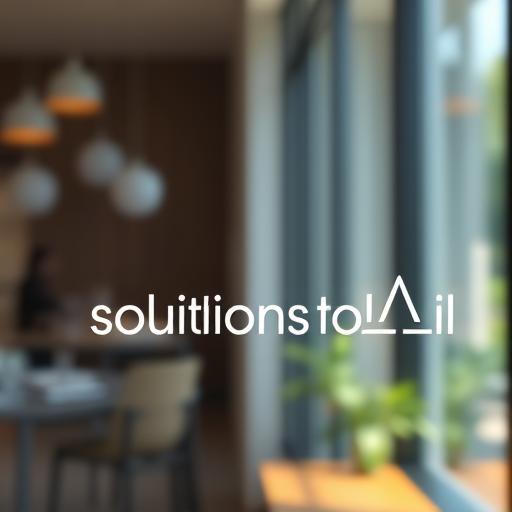Why Lighting is Key to Your Home Office
Your home office is your professional command center, and getting the setup just right makes a huge difference. Think about your chair, your desk, and critically, your lighting. The light in your workspace impacts your mood, energy levels, and even how well you focus. If you have a space with height, you might even decide to buy chandeliers for high ceilings to set a grand yet functional tone from above.
Good lighting isn’t just about seeing clearly; it’s a foundational element for staying productive and comfortable throughout your workday. Poor lighting can lead to headaches, eye fatigue, and a general feeling of sluggishness, making it harder to stay on task. Setting up bright, appropriate light helps keep you alert and engaged.
The Power of Natural Light ☀️
Letting in natural light is arguably the best thing you can do for your home office. Sunshine boosts your mood, helps regulate your body’s natural clock, and provides a beautiful, diffused light source that’s easy on the eyes. Position your desk near a window if possible, avoiding direct glare on your screen but benefiting from the ambient glow.
Maximize the natural light you have access to. Keep windows clean, use light-colored window treatments like sheer curtains instead of heavy drapes, and avoid placing large furniture directly in front of windows. Even on cloudy days, natural light provides a pleasant quality of illumination that artificial lights often struggle to replicate fully.
Building Your Layers: Ambient Light
Ambient light provides the general illumination for your entire office space. This could come from overhead fixtures, track lighting, or even strategically placed floor lamps. This layer is important because it prevents harsh shadows and high contrast areas that can be uncomfortable and distracting.
Think of ambient light as the base layer – it should provide enough general brightness so you aren’t walking into a dim cave. It creates a comfortable overall environment before you add more focused light sources. A good ambient light ensures your eyes don’t have to constantly adjust when looking away from your brightly lit screen or desk area.
Spotlight on Efficiency: Task Lighting
Task lighting is your focused workhorse. This is the light you direct specifically onto the area where you are performing a task, like reading documents, writing notes, or working on intricate projects. The most common example is a good desk lamp.
Having dedicated task lighting significantly reduces eye strain by providing ample brightness precisely where you need it. An adjustable desk lamp is ideal, allowing you to control the direction and intensity of the light. This helps you concentrate on detailed work without squinting or leaning in awkwardly.
Setting the Vibe: Accent and Decorative Lights
While not strictly about function, accent and decorative lighting play a role in making your office a place you enjoy being. Accent lights can highlight artwork or plants, adding visual interest. Decorative fixtures, like a stylish table lamp or a unique pendant, contribute to the room’s aesthetic.
Adding personal touches through decorative lighting helps your home office feel less sterile and more inviting. It’s about building an atmosphere that supports your professional activities while still feeling connected to your home. A well-chosen lamp or fixture can brighten a corner and add a touch of personality. ✨
Color Temperature Matters: Warm vs. Cool 💡
The color temperature of your light bulbs impacts the mood and feeling of your workspace. Measured in Kelvins (K), lower numbers (like 2700K-3000K) produce warm, yellowish light, similar to traditional incandescent bulbs. Higher numbers (like 4000K-5000K) produce cooler, more bluish-white light.
Cooler, white light is generally considered better for concentration and alertness, making it suitable for overhead or task lighting in a work area. Warmer light is more relaxing and cozy, perhaps better suited for a reading corner or ambient lighting in a break area within your office space. Consider a mix, using cooler light for primary work zones and warmer for areas where you might relax or think.
Banishing Glare and Eye Strain
Glare is the enemy of comfortable computer work. It occurs when bright light reflects off your screen or shiny surfaces, forcing your eyes to work harder to see past it. Positioning your lights and desk carefully is key to minimizing glare and preventing eye fatigue. Avoid placing bright lights directly behind you, which can cause glare on your monitor.
Using diffused light sources, like lamps with shades or fixtures with frosted covers, helps soften the light and reduce glare. Positioning your computer screen so it’s not directly facing or opposite a window or bright light source also helps immensely. Protecting your eyes allows you to work longer and more comfortably! 👀
Lighting for Video Calls: Looking Professional
With video calls being a daily reality for many, how you appear on screen is part of your professional presentation. Good lighting makes a huge difference! Avoid sitting with a bright window or light source directly behind you, as this will make you appear as a dark silhouette.
The best setup for video calls involves having a soft light source positioned in front of you, slightly above eye level. This illuminates your face evenly and prevents unflattering shadows. A small ring light, a softbox, or even just positioning your desk to face a window can help you look your best and most professional on camera. 👍
